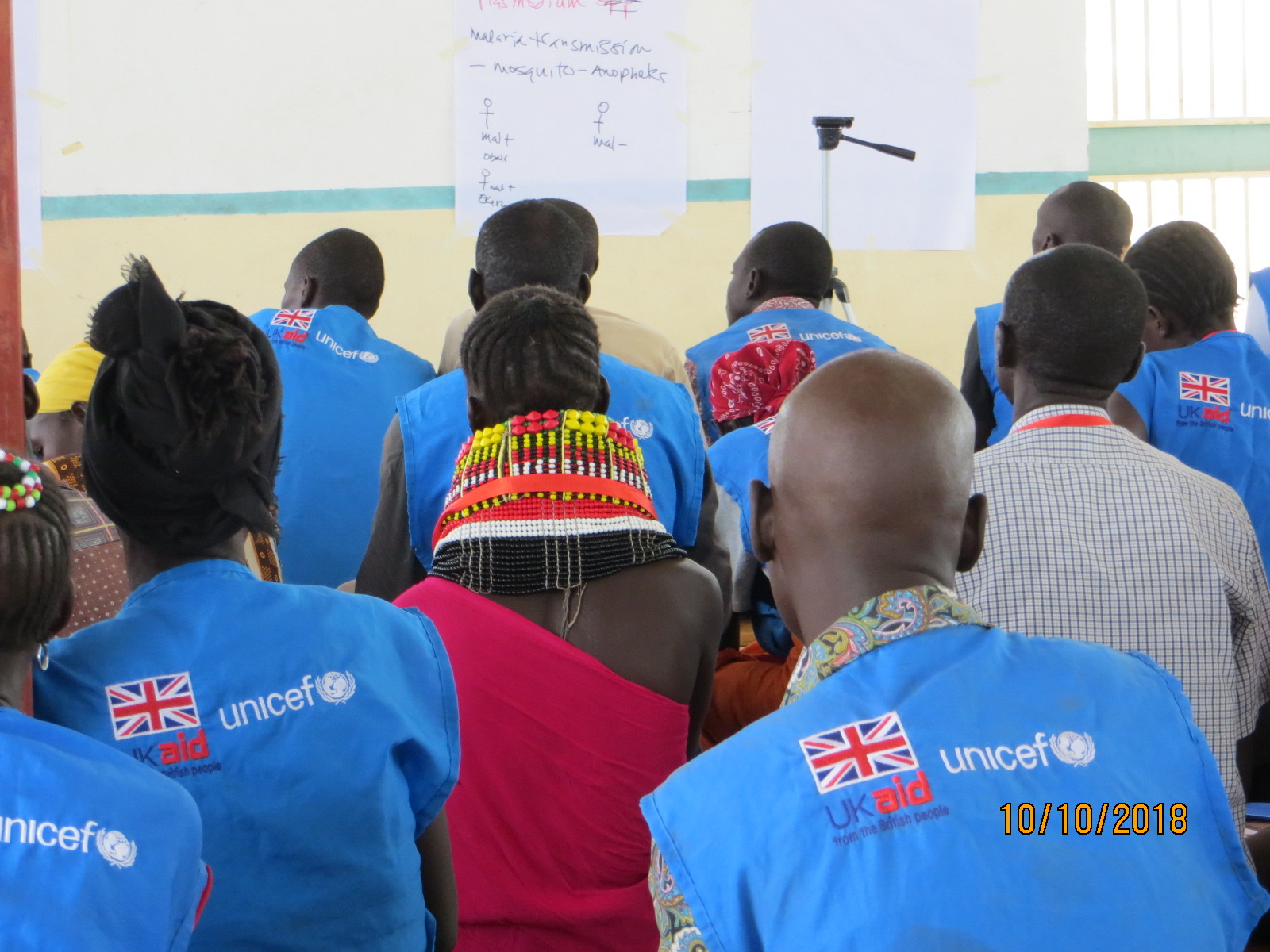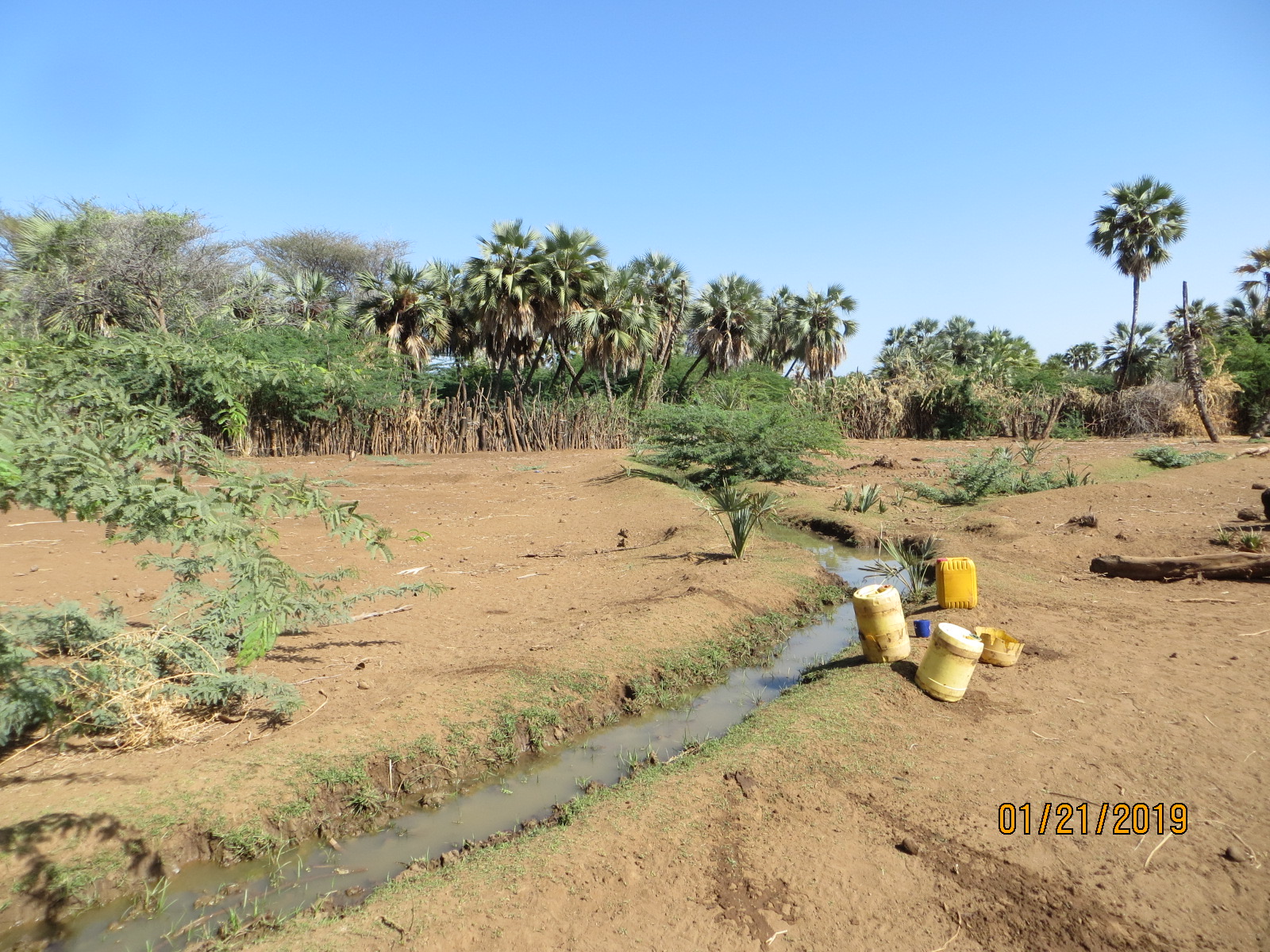Over the last few months, we have worked on setting up community-based malaria surveillance in Turkana with the help of the County Health Leadership. Here are a few highlights:
We trained 100 community health workers from five communities to follow malaria cases identified in the health facility to their home and test household members for malaria


No power in the training hall so all of our ‘slides’ had to be drawn by hand
We also initiated surveillance of travelers coming into Turkana via the road and the airstrip. We offer free malaria diagnostic testing and treatment following a positive test. We have screened hundreds of passengers and found several malaria cases among them.
Entomological surveillance for both larvae and adult vectors is now beginning.

Hand-dug canals leading from the Turkwel river into the fields are a potential source of mosquitoes if the water is not moving or if stagnant pools form.



We also tested light traps for catching blood-seeking mosquitoes inside homes


We had the good fortune to sleep outside at the Turkana Basin Institute and see the sunrise over the river.

